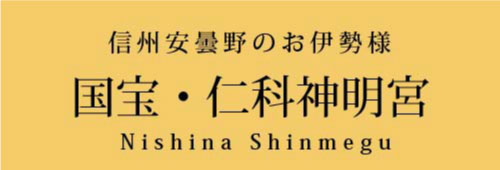
 "Kagura" of Nishina Shinmeigu Shrine
"Kagura" of Nishina Shinmeigu Shrine
In Japan, where rice has always been a staple food, rice has more meanings than just a food. In rural villages, the yearly cycle of life went along with rice cultivation cycle. Offering harvested rice to the Shinto god, called "Kami", for a bountiful harvest and dedicating songs and dances at the "Kaguraden", were also ways to show appreciation for a good harvest and pray for stability and prosperity of the community. Today, the festival is still held every year by the local Ujiko (people believe in Kami enshrined in the shrine in living area) of the Miyamoto area.
On March 15, Nishina Shinmeigu Shrine holds "Koshikisakuhajime-no-Shinji", the ritual to pray for a good harvest for the year. The story of farming is acted out by the floor of Kaguraden is made to look like a paddy field, and by hoeing to make a seedling bed, spreading seeds, and chasing away birds. This ritual has been handed down since the days when the Nishina family ruled the area and is designated as an intangible folk cultural asset of Nagano Prefecture.
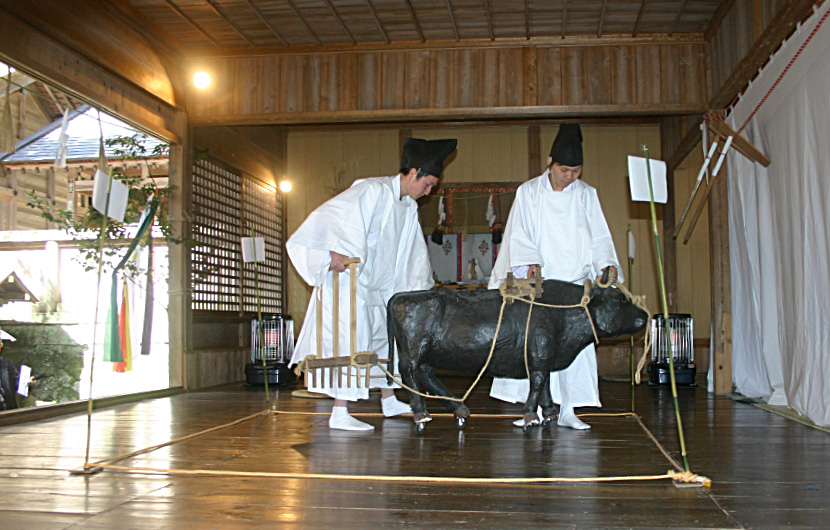
"Kosikisakuhajime-no-Shinji"
On the third Monday of September, before the rice harvest, an autumn festival is held to show appreciation for the harvest of the year. "Daidai-Kagura”, performances based on seven mythological themes, is dedicated at the festival. This Kagura is also designated as an intangible folk cultural asset by Nagano Prefecture.
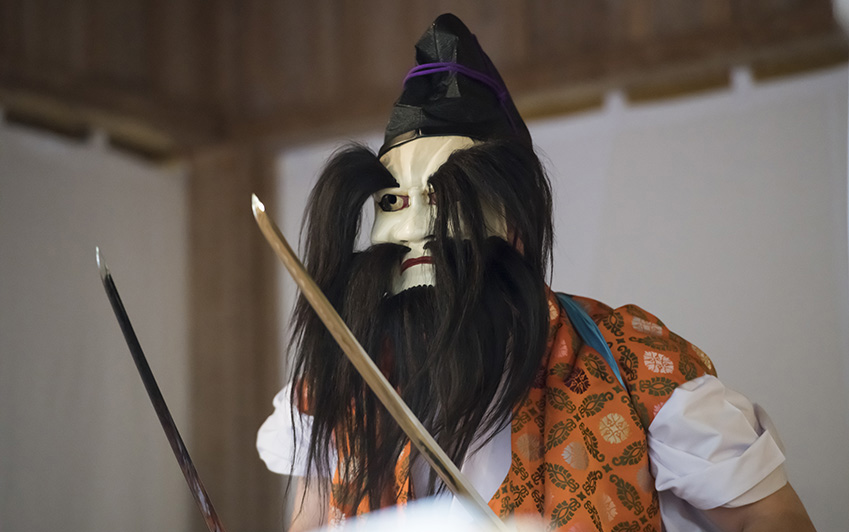
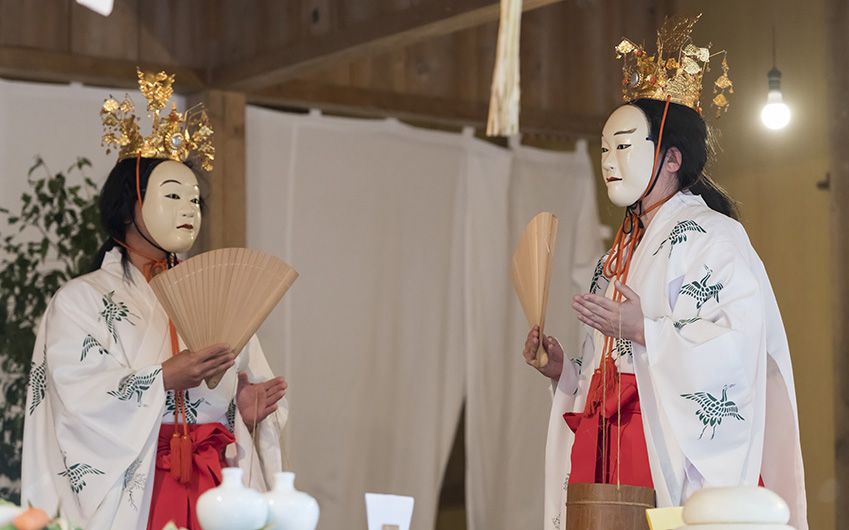
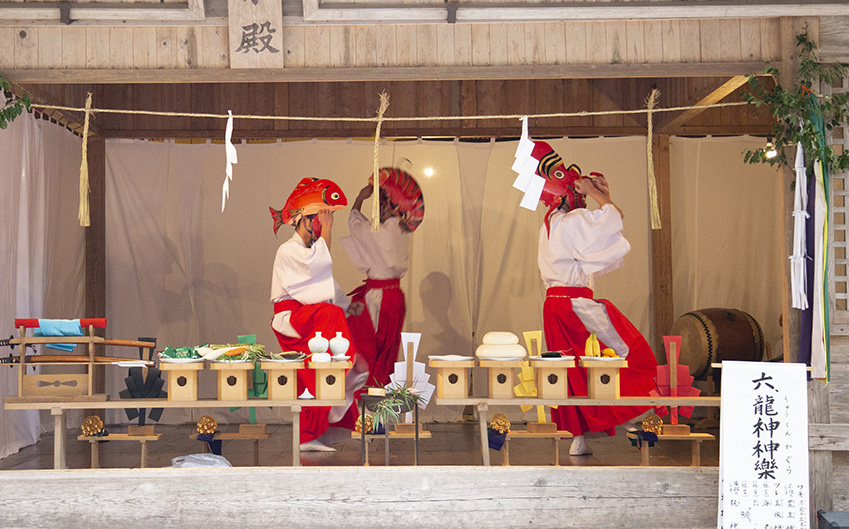
"Daidai-Kagura"
On November 23rd, the rice harvested that year is offered to Kami, and local young women dedicate the dance called "Urayasu-no-Mai".
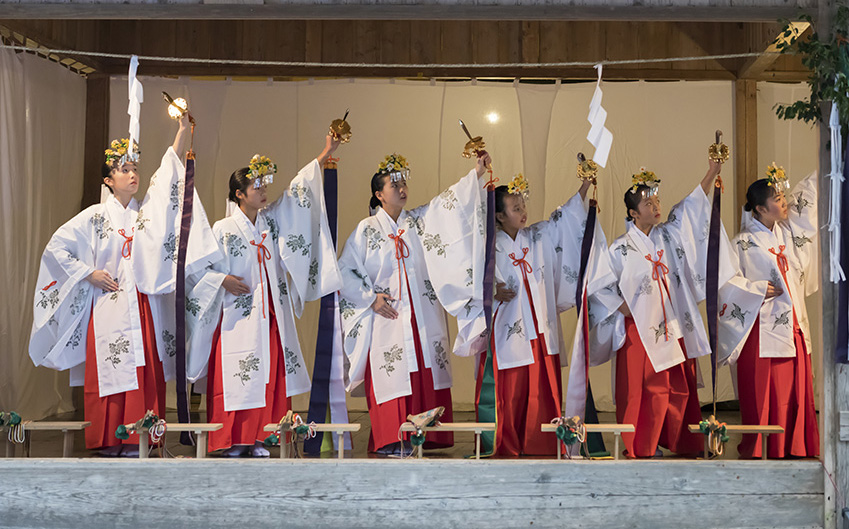
"Urayasu-no-Mai"




